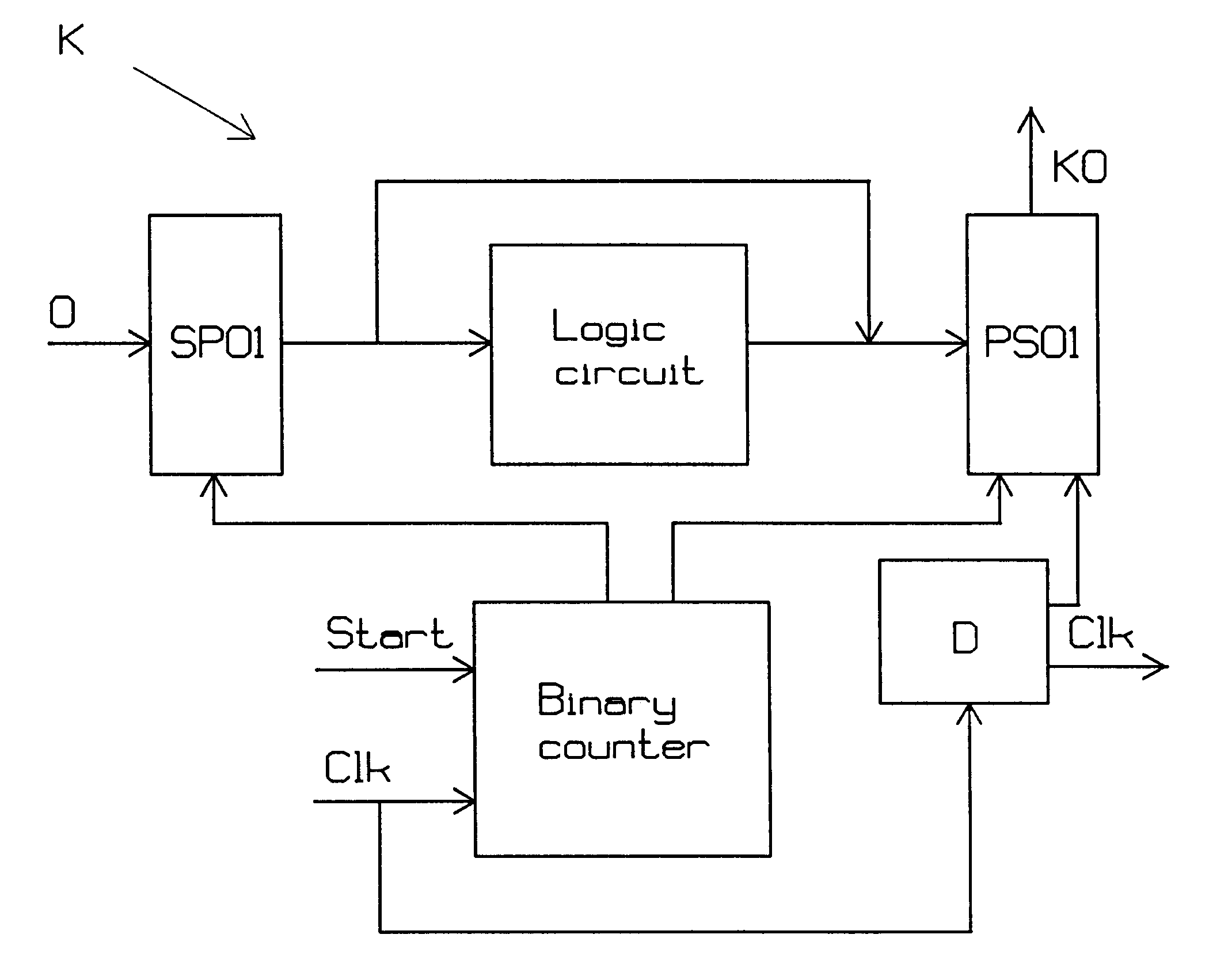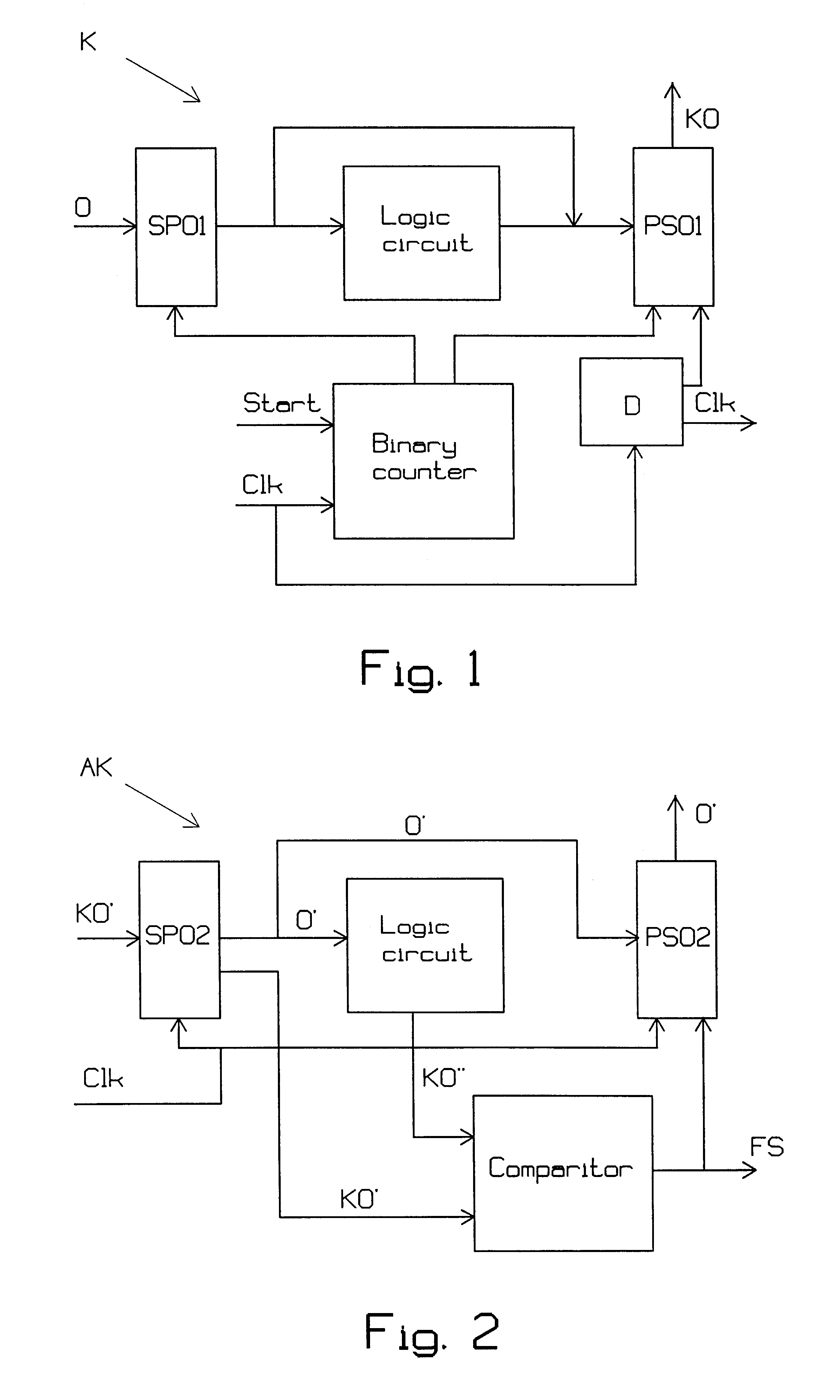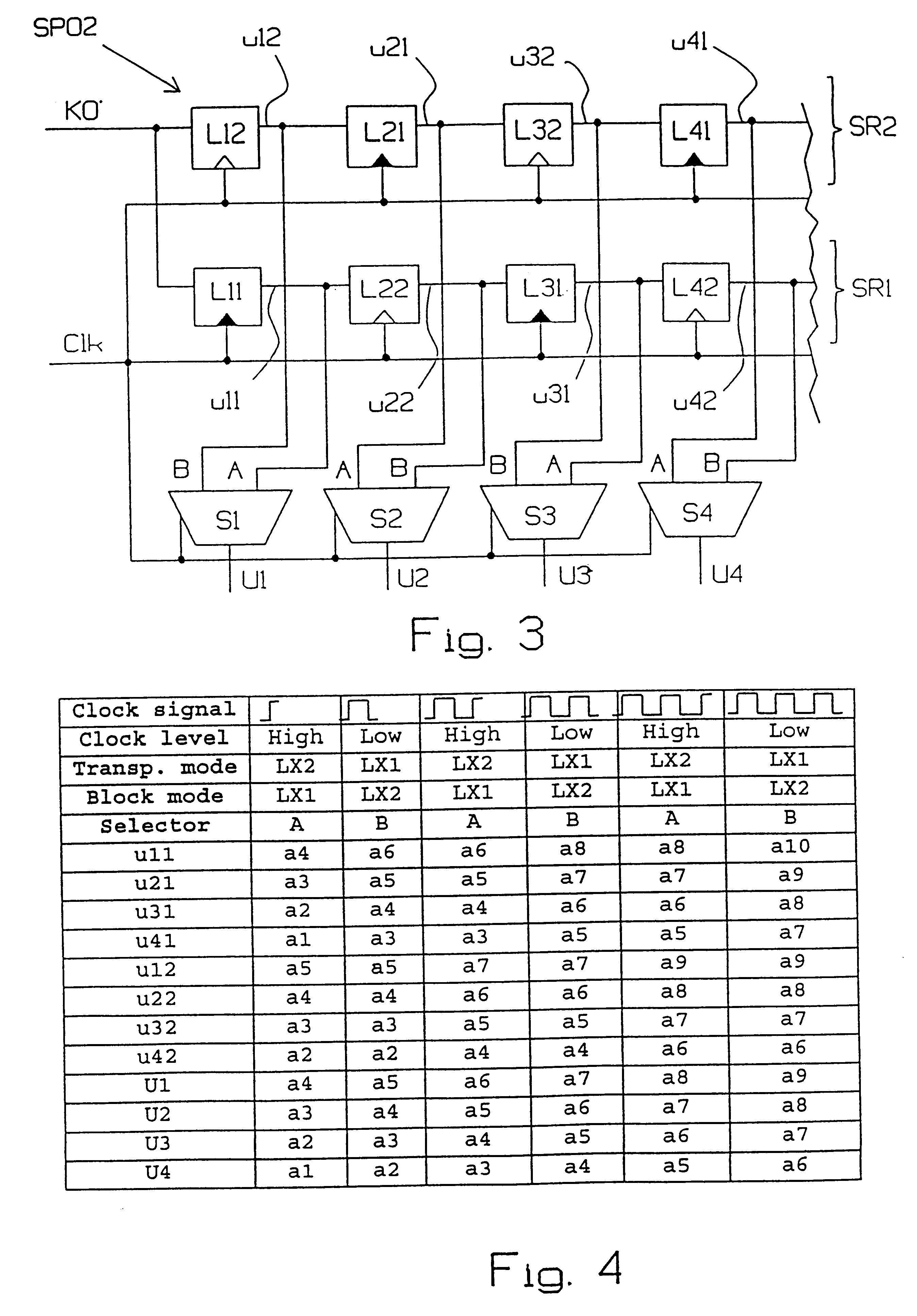Method and apparatus for encoding/decoding n-bit data into 2n-bit codewords
a technology of n-bit data and codewords, applied in the direction of code conversion, dc level restoring means or bias distortion correction, baseband system details, etc., can solve the problems of difficult to implement block coding at high transmission speeds and difficult to implement a simple encoding logic operation
- Summary
- Abstract
- Description
- Claims
- Application Information
AI Technical Summary
Benefits of technology
Problems solved by technology
Method used
Image
Examples
Embodiment Construction
FIG. 1 illustrates an inventive encoder K. The encoder includes a serial-parallel converter SP01, a logic circuit and a parallel-serial converter PS01. Clock signals from a clock Clk are required for synchronizing purposes.
The serial-parallel converter SP01 can be based on a shift register which reads incoming data in groups of N bits, so-called words O, for instance at each positive or negative edge of a clock signal arriving from the clock Clk, wherewith serial-parallel conversion is carried out. The clock signal may have the form of a square wave or a sine wave. Each word O to be encoded is then moved to a second stage in the shift register each Nth period of the clock signal. This sampling signal is generated each Nth period by a binary counter of the frequency divider kind, for instance. The inverted values may also be available on the output of the serial-parallel converter SP01.
The logic circuit reads the N bits of sampled data in the word and generates a complementary...
PUM
 Login to View More
Login to View More Abstract
Description
Claims
Application Information
 Login to View More
Login to View More - R&D
- Intellectual Property
- Life Sciences
- Materials
- Tech Scout
- Unparalleled Data Quality
- Higher Quality Content
- 60% Fewer Hallucinations
Browse by: Latest US Patents, China's latest patents, Technical Efficacy Thesaurus, Application Domain, Technology Topic, Popular Technical Reports.
© 2025 PatSnap. All rights reserved.Legal|Privacy policy|Modern Slavery Act Transparency Statement|Sitemap|About US| Contact US: help@patsnap.com



